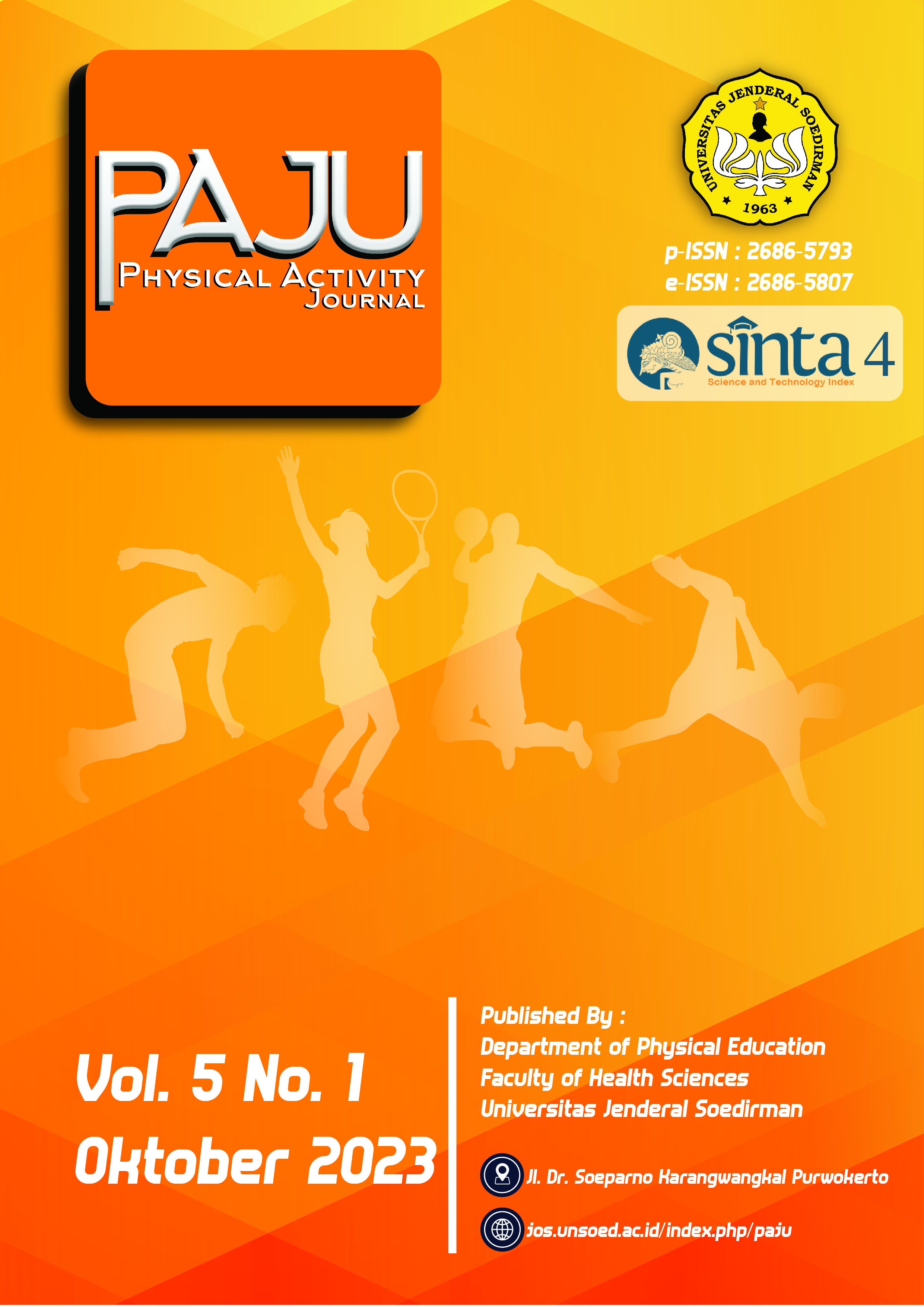The Development of Takraw Ball Media for Sepak Takraw Learning for Sports Education Students
Abstract
POR Uniska students still need more confidence during takraw practice activities because the ball used (media) is very hard, and the takraw ball is factory-made. This study aims to determine the development of takraw ball learning media to determine its attractiveness level. This type of research is Research and Development (R&D) adapted by Sugiono from his method. The subjects of this research were MAB POR UNISKA students in regular class B 2020, and the data collection instrument used was a questionnaire given to material experts, media experts, and Sepaktakraw course lecturers to test the quality of rubber rattan takraw balls for MAB POR UNISKA students. The development of this takraw ball was carried out and adapted from the research and development (R&D) method, which consists of several stages following the steps of Bord and Gall, including identification of potential and problems, data collection, product design in the form of a simple takraw ball, design validation, design revision, product trial, and final product revision. The results of the assessment of simple takraw balls in sepak takraw learning include: the material expert assessment gives a final average score of 96.3 with very interesting criteria, the media expert gives a final average score of 80.6 with very interesting criteria, and the course instructor gives a score of 90.83 with very good criteria. The product trial results showed an average final score of very good attractiveness. The development of rubber rattan takraw ball learning media for MAB POR UNISKA students is very suitable for use as learning media
References
Anggraeni, R. D. (2023). Teacher Creativity in Physical Education Learning in Elementary Schools. Journal of Physical Activity (PAJU), 4(2), 221-230
Assyauqi, M. I. (2020). The Borg and Gall Development Model. Researchgate. Not available: December
Budyastuti, Y. &. (2021). Application of constructivism theory in interactive online learning. Papeda Journal: Journal of Basic Education Publications, 3(2), 112-119
Greenson, R. R. (2018). Technique and practice of psychoanalysis:. Routledge, Volume I.
Hidayat, R. B. (2020). Dominant Physical Factors Determining Sepak Takraw Playing Skills. MensSana Journal, 5(1), 33-39
Kinasih, T. I. (2022). Development Of Busy Book Educational Media To Develop Expressive Language In Children Aged 5-6 Years At Bimbat Audi Kindergarten, Serpong Sub District, South Tangerang City. Ceria: Journal of Early Childhood Education Study Program,, 11(2), 20-30
Lukman, S. M. (2022). The Relationship Between Physical Self-Concept And Parental Support With Self Confidence Of Junior High School Students. International Journal of Educational Review, Law And Social Sciences (IJERLAS), 2(6)
Purwanto, D. (2017). Development of Interactive Multimedia-Based Sepak Takraw Playing Skills Training Model. Jipes: Journal of Indonesian Physical Education and Sports,, 3(1), 33-40
Rohmatullayaly, E. N. (2017). Body size growth patterns in the Baduy community. HAYATI Journal of Biosciences, 24(2), 57-64
Semarayasa, I. K. (2017). Utilization of mobile phone videos in learning sepak takraw scissors spike. In 2nd International Seminar on Educational Technology 2016, 428
Suryobroto, A. S. (2022). Character education for the independence of elementary school students through playing four goal soccer. urnal of Indonesian Physical Education, 18(2), 155-169
Sugiyono. 2015. Research & Development Methods. Bandung. Alfabeta
Tan, G., & Lim, H. (2017). The Effect of Takraw Ball Design on Endurance and Sepaktakraw Performance. Journal of Physical Education and Sport, 22(2), 67-81
Tools, M. f. (2020). Management for quality improvement: 7 new QC tools. CRC Press
Patel, S., & Kim, D. (2018). Development of a Durable Takraw Ball: A Case Study of Materials and Design. Scientific Journal of Football and Sepak Takraw, 14(3), 89-104
Wulandari, D. A. (2019). Analysis of Sepak Takraw Upper Service Motion in Male Athletes at Sidoarjo State Sports School. Journal of Sports Achievement, 2 (4)
Yayuk, S. (2019). The influence of principal leadership and education costs on the quality of the teaching and learning process and its impact on the competence of SMK graduates in Gunungkidul district. Journal of Education Management Accountability, 7(1), 84-96
Yunitaningrum, W. H. (2020). Sepaktakraw Smash Training Model Based on Training Aids. PENDIPA Journal of Science Education, 4(2), 6-13
Mohamamd Nuzulul Asfihani (2013). Development of Sepak Takraw Learning Model Through IO Game Using Rubber Balls for Basic Sepak Sila Techniques for Fifth Grade Students of SD Negeri Bintoro 09 Demak
Zulkifli. (2021) Basic Learning of Sepak Takraw
Mariadi, D., Ilham, I., & Widowati, A. (2021). Development of a Hanging Ball Top Service Tool in Sepak Takraw. Journal of Education Management and Social Sciences, 2(1), 426-434
Homarul Ashabi Saputra (2018). Application of Rubber Ball Modification Variations to Improve Sepak Takraw Lower Serve Skills
Giri Wiarto. (2015). Learning Innovation in Physical Education. Yogyakarta: Laksitas

This work is licensed under a Creative Commons Attribution 4.0 International License.


















